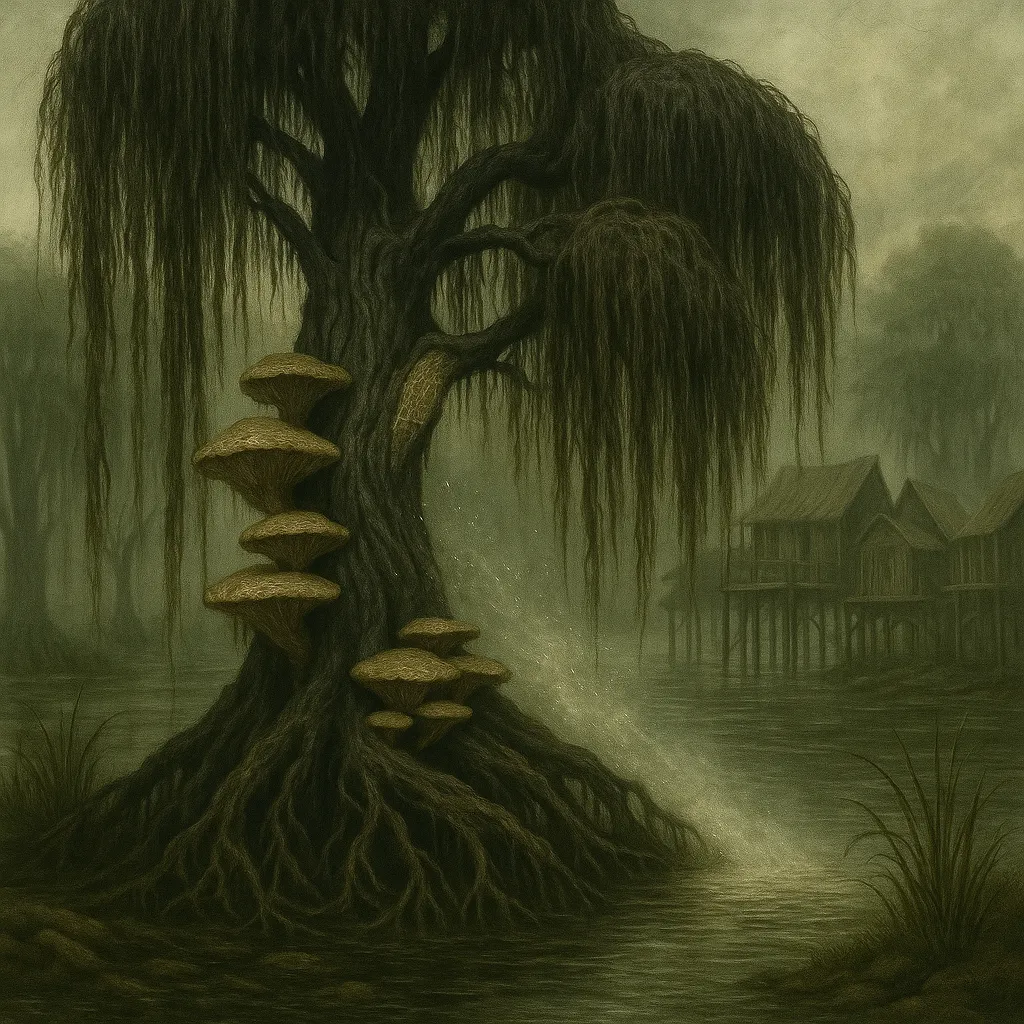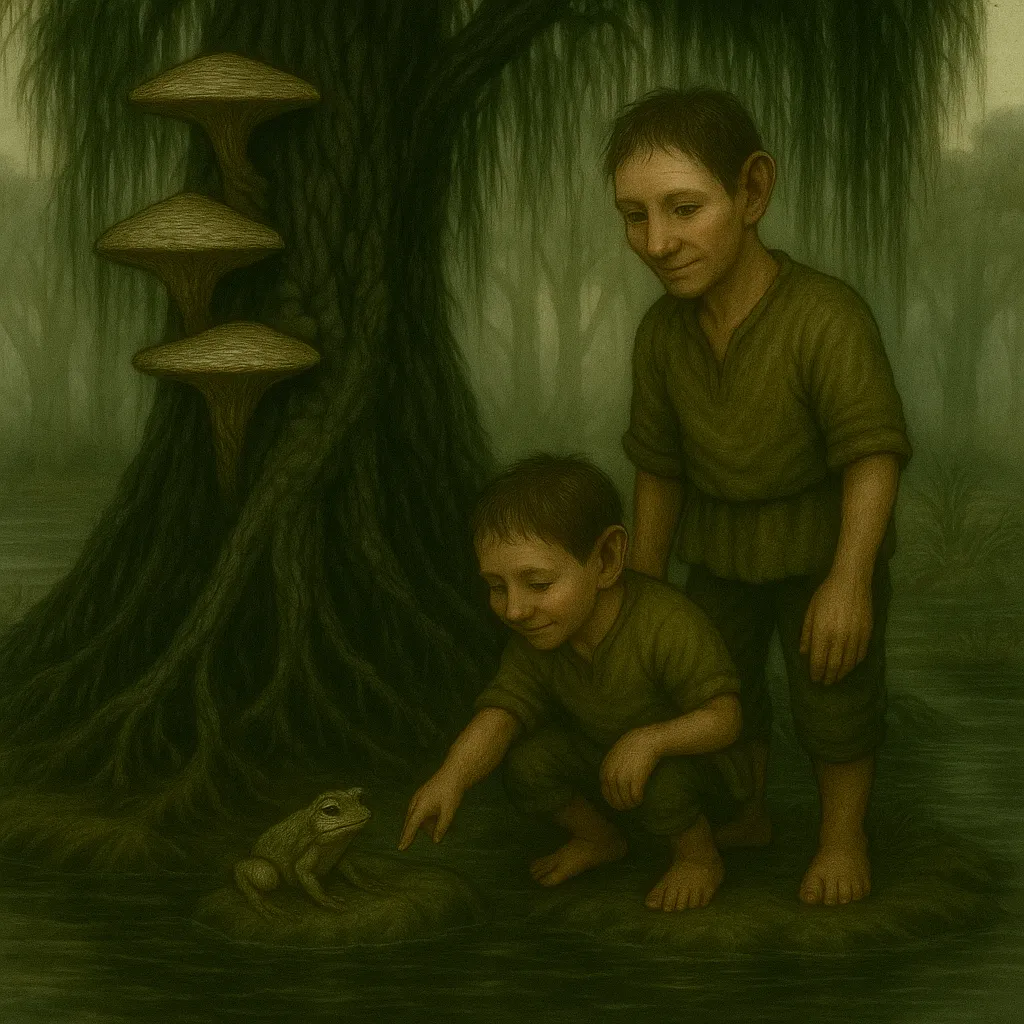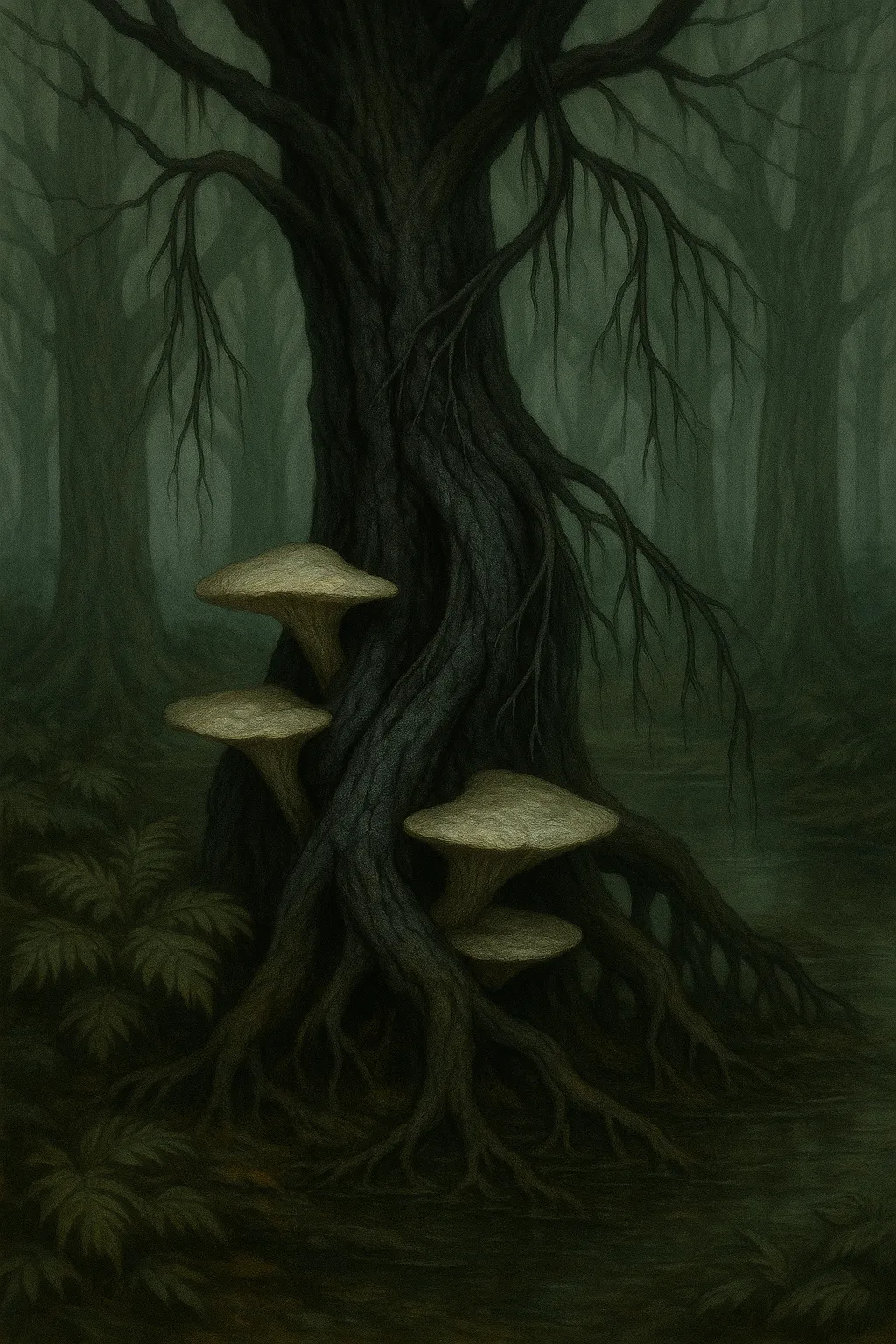The Ashwillows of The Valemire

In the low and waterlogged margins of the Valemire, where the ground will not bear a man’s step without swallowing his boots, you will find the Ashwillows. They stand in small, tight colonies—trees that seem at first glance to have been burned long ago, yet still live on in defiance of the fire. Their bark is dark as coal, cracked with fine silver seams where moisture clings. Their branches stoop and drape into the water like strands of drowned hair, trailing silt when stirred.
But no flame ever touched them. Their blackness comes from within.
The Ashwillows are not merely trees, but compacts—half tree, half fungus, bound together so tightly that the one cannot be separated from the other. It is said the Valemire’s willow groves once grew tall and hollow, brittle against the constant wet. They were undone by a creeping rot, a black mycelium that took root in their hearts. Yet rather than perish, the trees yielded. They allowed the fungus to consume their cores and, in return, found a new strength.
Now, when one splits an Ashwillow branch, one finds two natures in the wood. The outer ring is still willow—pliable, fibrous, pale. But the inner core is a lattice of black filaments, hardened and strange, neither wood nor pure fungus, but something between. This inner scaffold gives the Ashwillows their unusual resilience. They bend in storms, but they do not shatter. When floods rot the roots of other trees, the Ashwillows persist, for the fungus skeleton does not decay as wood alone does.
The fungus, for its part, is nourished by the sugars the willow continues to produce, its filaments threaded into every living vein. The tree lives longer than its kin, though it grows more slowly, as if always balancing its energy with the hunger of its shadow-self.

There is more. At certain times of year—always in late summer, just before the great wetting storms—the Ashwillows release a fine dust from the undersides of their leaves. It is dark, nearly invisible save against the glow of moonlight, and drifts into the surrounding pools. I have seen it spread across the water in thin veils. The locals claim it keeps the marsh clear of “choke molds,” those pale mats of fungus that smother reeds and cattails. Indeed, where Ashwillows stand, the channels run clearer, and fish and frogs gather in greater number.
For this reason, fishers speak of the “black groves” as lucky ground. Many villages build their stilt-houses within reach of an Ashwillow colony, believing the trees purify the waters as guardians of the swamp. They carve hooks from the outer wood—flexible, strong—and burn the inner core into a charcoal they say will “draw grief out of the bones.” I was once given such a charcoal lump by an old woman at Clath’s Crossing, who told me to hold it in my pocket through the season of mourning. Whether it worked, I cannot be certain. But I found myself clutching it often.
When I pressed my ear to the trunk of a living Ashwillow, I heard what seemed a faint hissing, like water striking hot stone. Perhaps it was only the bubbling of marsh gas through the roots. Yet I could not shake the feeling it was the sound of rot itself, endlessly at work, reshaping death into scaffold.
In the Ashwillows I see a truth of this land: survival not by resisting corruption, but by weaving it into life. Rot turned to structure, death turned to bone. They are not willow, not fungus, but a union of both—a compromise that grants them a place where neither could endure alone.
So I have marked the Ashwillows as more than a curiosity. They are an emblem of the Valemire itself: a kingdom of half-measures and hidden bargains, where to endure is not to conquer, but to surrender and change.
